
Danaus genutia, the common tiger, is one of the common butterflies of India. It belongs to the "crows and tigers", that is, the Danainae group of the brush-footed butterflies family. The butterfly is also called striped tiger in India to differentiate it from the equally common plain tiger, Danaus chrysippus. The species was first described by Pieter Cramer in 1779.
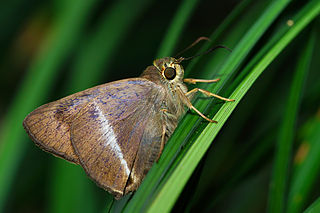
Hasora taminatus, the white banded awl, is a butterfly belonging to the family Hesperiidae, which is found in Asia.

Miletus biggsii, the Bigg's brownie, is a small butterfly found in India and Myanmar that belongs to the lycaenids or blues family.

Acytolepis is a genus of small butterflies that belongs to the lycaenids or blues. The genus was first described by Lambertus Johannes Toxopeus in 1927. The species are found in the Indomalayan and the Australasian realms.

Indomalayan realm
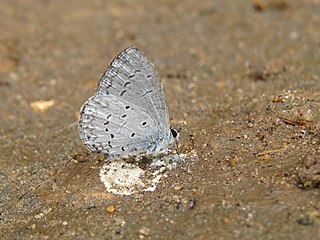
Celastrina lavendularis, the plain hedge blue, is a small butterfly found in Sri Lanka, India, and across the Indomalayan realm that belongs to the lycaenids or blues family.

Danaus, commonly called tigers, milkweeds, monarchs, wanderers, and queens, is a genus of butterflies in the tiger butterfly tribe. They are found worldwide, including North America, South America, Africa, Asia, Indonesia and Australia. For other tigers see the genus, Parantica.

Hypolycaena erylus, the common tit, is a small but striking butterfly found in India and South-East Asia that belongs to the lycaenids or blues family. The species was first described by Jean-Baptiste Godart in 1823.
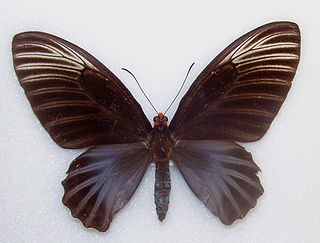
Atrophaneura nox, the Malayan batwing, is a papilionid butterfly found in Java, northern Borneo and Peninsular Malaysia.

Orsotriaena medus is a butterfly found in south Asia, southeast Asia, and Australia. It is the only species in the genus Orsotriaena, first described by Hans Daniel Johan Wallengren in 1858.

The Mahathala ameria, the falcate oakblue, is a species of blue butterfly, of the family Lycaenidae found in South-East Asia.

Curetis saronis, the Burmese sunbeam or Saronis sunbeam, is a species of butterfly belong to the lycaenid family. It is found in the Indomalayan realm.

Luthrodes is a genus of butterflies in the family Lycaenidae erected by Hamilton Herbert Druce in 1895. Its species are found in Asia and in Oceania.

Tajuria is an Indomalayan genus of butterflies in the family Lycaenidae.
Tipasa is a genus of moths of the family Erebidae. The genus was erected by Francis Walker in 1863.

Arhopala madytus, the bright oakblue, is a butterfly of the family Lycaenidae. The species was first described by Hans Fruhstorfer in 1914. It is found on New Guinea and adjacent islands and the north-east coast of Queensland, Australia.
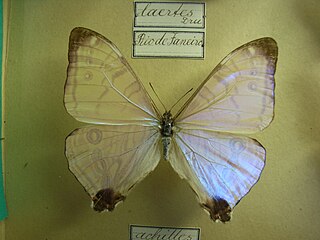
Morpho laertes, the White morpho or Epistrophus white morpho, is a Neotropical butterfly found in Brazil, Uruguay, Paraguay, and Argentina. The white morpho is native to the Atlantic Forest, where they are distributed throughout a landscape of multiple species.
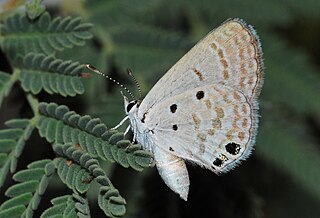
Luthrodes galba, the Persian grass blue, is a butterfly in the family Lycaenidae. It is found in southern Turkey, central and eastern Arabia, Iraq, Iran, Afghanistan, the Caucasus and Cyprus.

















